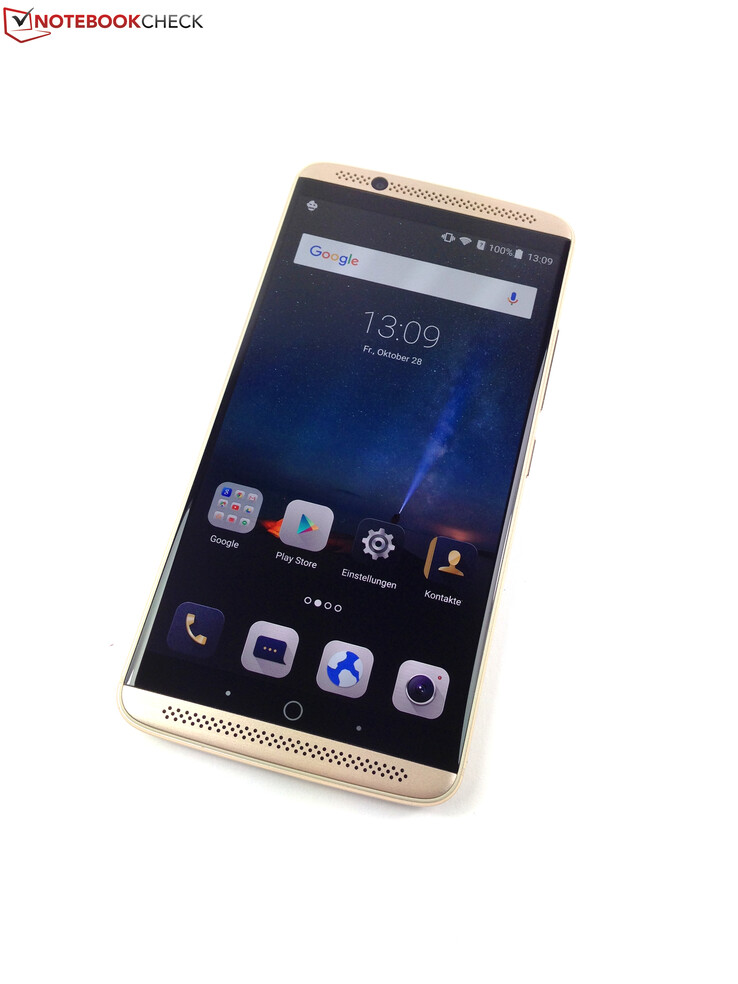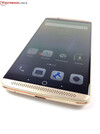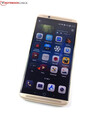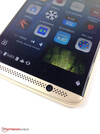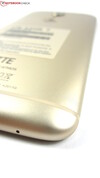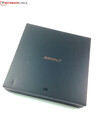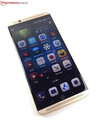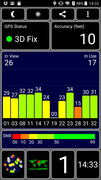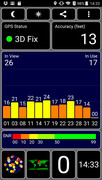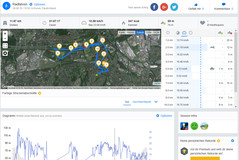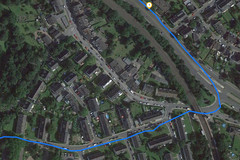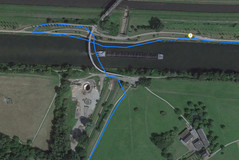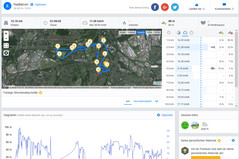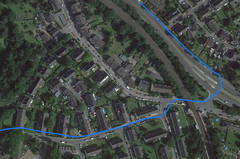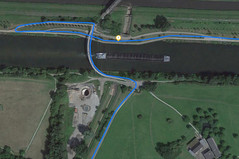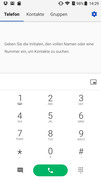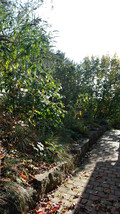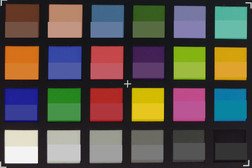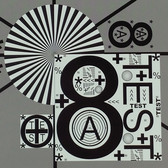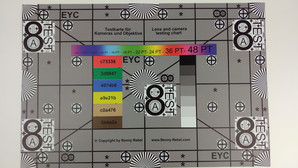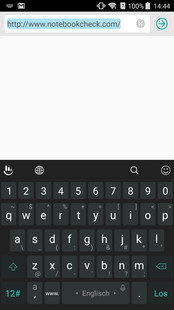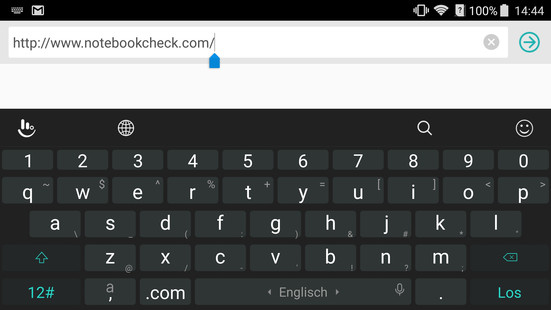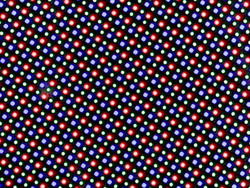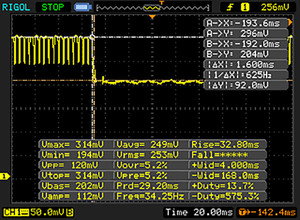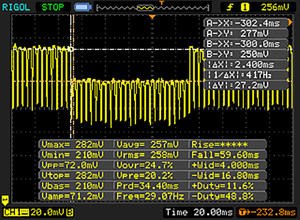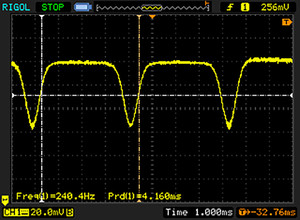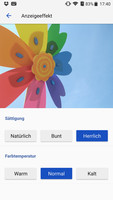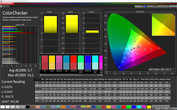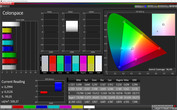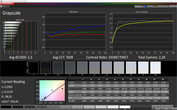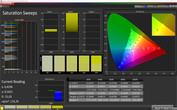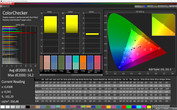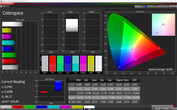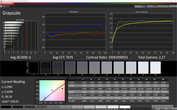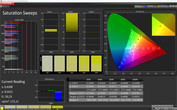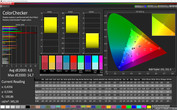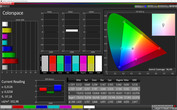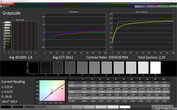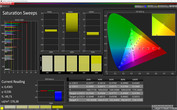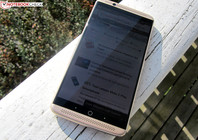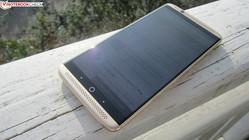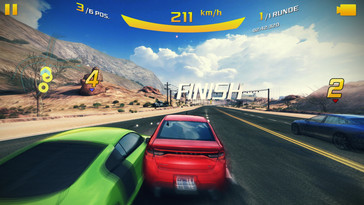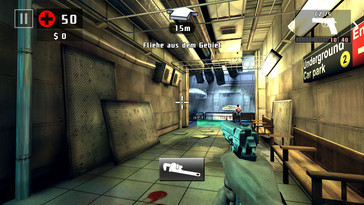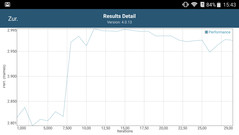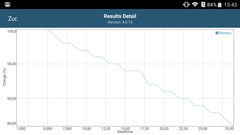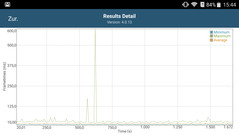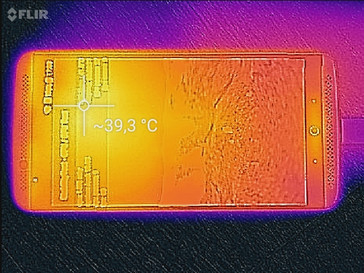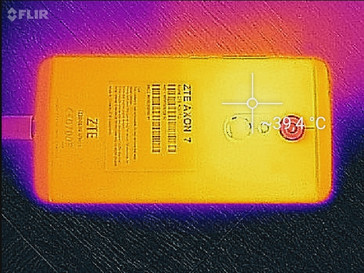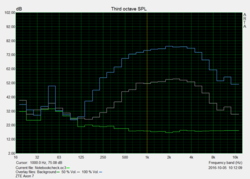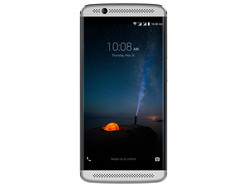ZTE Axon 7 Smartphone Review

For the original German review, see here.
The Chinese manufacturer ZTE prepares for a home run with its Axon 7. Equipped with premium hardware, the 5.5-inch smartphone is set to shake up the premium range. Perhaps that is why ZTE has skipped several generations of version numbers when naming the direct successor of the Axon Elite. The number fits better with potential rivals such as Samsung's Galaxy S7 or Apple's iPhone 7. A glance at the configuration list shows that this might not be biting off too much.
ZTE's Axon 7 is powered by the latest SoC premium model, Qualcomm Snapdragon 820 MSM8996. It can fall back on 4 GB of RAM and 64 GB of internal storage. Android 6.0.1 serves as the operating system, which a 5.5-inch AMOLED panel with the QHD resolution of 2560x1440 pixels displays. A dual-SIM, USB Type-C port with Qualcomm's Quick Charge 3.0, NFC, and a 20-megapixel primary camera are further hardware components. However, the highlight is definitely the good sound that up till now has not been seen in a smartphone: The stereo speakers support Dolby Atmos and can even produce virtual surround sound.
ZTE's Axon 7 officially priced at 449 Euros (~$497) has to compete against a selection of up-to-date mid-range and premium range smartphones. These include: the Asus ZenFone 3, the HTC 10, the Huawei Honor 8, the Lenovo Moto Z Play, the LG G5, the OnePlus 3, and the Samsung Galaxy S7.
Case
ZTE wraps its high-end smartphone in a slim, 7.9-millimeter (~0.3 in) aluminum casing. Despite its large 5.5-inch screen diagonal, it gives an almost delicate and plain impression. The extremely thin display bezel on the sides contributes to this significantly. When looking at the smartphone from the front, it looks a bit as if only the small speakers at the upper and lower edges keep things in place.
The main theme of the chassis, which ZTE offers in gold and gray, is curves - we naturally mean the design language with this. No matter where we look, the Axon 7 does not present any hard edges or transitions. The 16:9 screen is lightly beveled towards the corners and thus merges elegantly into the chassis where everything is rounded and nothing edgy. Overall, not only does the casing look high-quality, it also feels good and can be held safely.
The rear-sided fingerprint scanner has been lowered slightly into the chassis, and can be found intuitively with a finger. In contrast, the lens of the 20-megapixel primary camera protrudes out of the casing by roughly one millimeter (~0.04 in), which is also our first point of criticism. The Axon 7 easily starts to rock when placed on a table, which can get particularly annoying when tapping on the screen's sides. Another point of criticism is the non-removable lithium ion battery.
Connectivity
The Axon 7 relies on a high-end SoC in the form of Qualcomm's Snapdragon 820 MSM8996. Its four cores clock at 2.15 GHz each. The Adreno 530 graphics unit is also integrated into the chip, and can render high-requirement Android games in high resolutions smoothly. Beyond that, ZTE has equipped the Axon with a generous 4 GB of RAM and 64 GB of internal storage. However, Android 6.0 Marshmallow and the preloaded apps reserve an unusually high amount of this with approximately 13 GB so that only about 51 GB are available for personal use. At least, it is possible to expand the internal storage by up to 128 GB with a microSD card. The microSD cards could only be formatted as portable storage in the test, and consequently only photos and other media files can be saved on it. Apps cannot be moved to it.
The micro USB port in the lower edge supports only USB 2.0 speeds, but it is conveniently the reversible Type-C port and also supports USB OTG. Qualcomm's Quick Charge 3.0 is also on-board and enables recharging the smartphone quickly. It needed approximately two hours in the test using the included power supply.
Software
ZTE's Axon 7 is based on Android 6.0.1 Marshmallow and runs the proprietary MiFavor 4.0 over it. It resembles the standard Android in many respects, but the design and feature elements are different. While the settings menu and notification center still function and look as before, an app drawer, for example, is not present and consequently there is no overview of the applications installed on the smartphone. On the other hand, MiFavor 4.0 offers some handy extra features that standard Android does not have, such as time-controlled power on and off and unlocking the smartphone via a spoken password ("Voiceprint"). Users who do not like the looks of MiFavor 4.0 can always change the user interface and icons via an app.
Communication and GPS
The Wi-Fi module in ZTE's Axon 7 supports Wi-Fi 802.11ac. Transmitting data via our Linksys EA8500 router was very fast and at a stable rate in the 5 GHz network. The Axon 7 just missed the 300 Mb/s threshold when sending data, and therefore came very close to Samsung's Galaxy S7 and OnePlus' 3. However, both were defeated in sending data as ZTE's smartphone achieved an excellent 337 Mb/s.
Besides a nano-SIM card, the dual-SIM card also accepts either a second nano-SIM card or a microSD card. In addition to GSM quad-band and UMTS quint-band, the Axon 7 also supports LTE Cat.6 in the 1, 3, 5, 7, 8, and 20 bands, among others. These correspond to the 800, 850, 900, 1800, 2100, and 2600 MHz frequencies important for Germany. Downloads are performed at up to 300 Mb/s, and uploads at a maximum of 60 Mb/s.
| Networking | |
| iperf3 transmit AX12 | |
| Samsung Galaxy S7 | |
| OnePlus 3 | |
| ZTE Axon 7 | |
| LG G5 | |
| Lenovo Moto Z Play | |
| Asus Zenfone 3 ZE552KL | |
| iperf3 receive AX12 | |
| ZTE Axon 7 | |
| OnePlus 3 | |
| Samsung Galaxy S7 | |
| LG G5 | |
| Lenovo Moto Z Play | |
| Asus Zenfone 3 ZE552KL | |
The GPS module in the Axon 7 pinpointed our position with an accuracy of up to 3 meters (~10 ft) in the test. It found a signal quickly both indoors and out. Our review sample was not quite as accurate and often placed us off route on the roughly 12-kilometer (~7.5 mi) bike test route where the ZTE had to compete against Garmin's Edge 500 professional navigation device. Overall, the Axon 7 measured only 200-meter (~219 yd) shorter total route than Garmin's device, and its tracking capabilities are absolutely suitable for everyday use.
Telephone and Call Quality
ZTE has adapted the Android integrated phone app's look slightly according to its MiFavor 4.0 user interface without changing the fundamental functions. As usual, the keypad appears after opening the app, and the user can then access contacts and groups.
All participants were loud and clear in calls via landline and mobile network, as well as in hands-free mode. The voices sometimes sounded a bit tinny, but overall, the call quality did not give any reason for complaint.
Cameras
The cameras in ZTE's Axon 7 have a resolution of 8 megapixels (webcam) and 20 megapixels. The primary camera uses a lens with an f/1.8 aperture and dual-LED flash. A phase detection auto-focus and a combination of an optical (OIS) and electronic (EIS) image stabilizer support the primary camera. An automatic mode for taking snapshots is set by default. The manual mode allows setting parameters such as sensitivity, white balance, exposure time, and focus. An additional HDR feature, photo modes such as panorama, multi-exposure or long exposure times round off the camera's decent software. According to the technical specifications, the primary camera can only record videos up to 1080p. However, the video quality can actually be increased to 4K at 30 frames per second.
The 8-megapixel webcam is equipped with an f/2.2 aperture and fix-focus (max. resolution: 3264x2448 pixels). It provides handy features such as selfie and beauty modes, timer function, and smile detection. It records videos at a maximum of 1080p at 30 frames per second.
As our test photos show, ZTE has equipped the Axon 7 with a very good camera module. Daylight photos convince with accurately identified image details and appeal with accurate color reproduction. They also display only a minor loss in focus when looking closer. The Axon 7's 20-megapixel camera benefits from the image stabilizer, especially in low-light conditions: Photos that are usually a challenge for smartphone cameras are neither blurred nor hazy. Fortunately, as with OnePlus' 3, the image noise is very low.
In addition to our test photos, we check the sharpness and colors under controlled test conditions. For this, we photograph ColorChecker Passport and our test chart as full-frame as possible. The photos are not edited afterwards.
ZTE's Axon 7 always reproduces colors a bit too warm and saturated. Strictly speaking, the photos look slightly unnatural, but ultimately vivid and high-contrast. Under controlled light conditions, the smartphone photographs our test chart sharply, although some transitions display minor artifacts. The sharpness decreases visibly toward the edges, but that is not a reason for deducting points - many professional cameras do not do a much better job here.
Accessories and Warranty
ZTE ships the Axon 7 with a modular power supply, USB Type-C cable, headset, sleeve, SIM/microSD slot tool, micro USB adapter, a quick start guide, and a warranty card. The manufacturer does not offer any smartphone-specific accessories on its website. A 36-month warranty is included on the Axon 7, but only 6 months on the battery. On the other hand, the touchscreen will be replaced free of charge when damaged accidentally in the first six months after the purchase as well as one free repair within the three-year warranty in case of liquid exposure.
Please see our Guarantees, Return Policies & Warranties FAQ for country-specific information.
Input Devices and Handling
The WQHD panel in ZTE's Axon 7 convinces with very good gliding properties. It implements gestures accurately, even in the optional glove mode and identifies 10 simultaneous inputs. The power button and volume control make an equally high-quality impression. They do not rock, have a crisp pressure point, and a short drop, and confirm actions with a quiet click. The Android keys below the screen also respond quickly. However, unfortunately, they are not backlit.
Powered by its high-end SoC, the Axon 7 gives the user the feeling of dealing with a very fast smartphone in terms of software. Apps are launched quickly and switching between menus and applications do not involve any significant delays. The integrated fingerprint scanner that can also be used for shooting photos and accepting calls responds just as reliably. The Axon 7 can manage up to 5 fingerprints.
The virtual keyboard fades in a number row above the letters by default and occupies half the screen in both portrait and landscape mode. It offers all the standard features including word suggestion, swiping, Emojis, and a spell checker.
Display
The Gorilla Glass 4 protected AMOLED panel in ZTE's Axon 7 displays the WQHD resolution of 2560x1440 pixels, and thus achieves a sharp reproduction at a pixel density of 534 PPI. Individual pixels can at most be seen on the screen when using a magnifying glass. Furthermore, the AMOLED technology gives the Axon 7 very high contrasts and crisp colors. Only the screen's average brightness (on a pure white screen) of 334.3 cd/m² is not nearly as high as other rivals. The panel in LG's G5 is over twice as bright with 774 cd/m². However, the Axon 7 manages up to 396 cd/m² when dark and bright areas are realistically distributed over the screen (Average Picture Level/APL50) and surpasses, for example, Samsung's Galaxy S7.
Unfortunately, the AMOLED panel pays for its good screen qualities with flickering that is measurable in every brightness setting and is also very noticeable to sensitive users. It appeared at a frequency of 240.4 Hz in our review sample.
| |||||||||||||||||||||||||
Brightness Distribution: 88 %
Center on Battery: 328 cd/m²
Contrast: ∞:1 (Black: 0 cd/m²)
ΔE ColorChecker Calman: 4.6 | ∀{0.5-29.43 Ø4.79}
ΔE Greyscale Calman: 2.8 | ∀{0.09-98 Ø5}
Gamma: 2.29
CCT: 6612 K
| ZTE Axon 7 AMOLED, 2560x1440, 5.5" | Asus Zenfone 3 ZE552KL IPS, 1920x1080, 5.5" | OnePlus 3 Optic-AMOLED, 1920x1080, 5.5" | Lenovo Moto Z Play AMOLED, 1920x1080, 5.5" | Samsung Galaxy S7 SAMOLED, 2560x1440, 5.1" | LG G5 IPS Quantum, 2560x1440, 5.3" | HTC 10 Super LCD 5, 2560x1440, 5.2" | |
|---|---|---|---|---|---|---|---|
| Screen | 20% | 11% | 43% | 33% | 11% | 23% | |
| Brightness middle (cd/m²) | 328 | 658 101% | 419 28% | 509 55% | 350 7% | 784 139% | 445 36% |
| Brightness (cd/m²) | 334 | 633 90% | 431 29% | 511 53% | 351 5% | 774 132% | 434 30% |
| Brightness Distribution (%) | 88 | 93 6% | 84 -5% | 93 6% | 98 11% | 91 3% | 93 6% |
| Black Level * (cd/m²) | 0.66 | 0.43 | 0.36 | ||||
| Colorchecker dE 2000 * | 4.6 | 4.9 -7% | 4.1 11% | 2.2 52% | 2.04 56% | 6.5 -41% | 2.8 39% |
| Colorchecker dE 2000 max. * | 14.7 | 9.1 38% | 12 18% | 5.8 61% | 3.25 78% | 11.7 20% | 5.8 61% |
| Greyscale dE 2000 * | 2.8 | 5.8 -107% | 3.3 -18% | 2 29% | 1.63 42% | 8 -186% | 3.7 -32% |
| Gamma | 2.29 96% | 2.26 97% | 2.1 105% | 2.25 98% | 2.07 106% | 2.22 99% | 2.31 95% |
| CCT | 6612 98% | 7840 83% | 6550 99% | 6768 96% | 6391 102% | 8699 75% | 7164 91% |
| Contrast (:1) | 997 | 1823 | 1236 | ||||
| Color Space (Percent of AdobeRGB 1998) (%) | 89.38 | 86.86 | 68.08 | ||||
| Color Space (Percent of sRGB) (%) | 100 | 99.35 | 97.46 |
* ... smaller is better
Display Response Times
| ↔ Response Time Black to White | ||
|---|---|---|
| 3.2 ms ... rise ↗ and fall ↘ combined | ↗ 1.6 ms rise | |
| ↘ 1.6 ms fall | ||
| The screen shows very fast response rates in our tests and should be very well suited for fast-paced gaming. In comparison, all tested devices range from 0.1 (minimum) to 240 (maximum) ms. » 13 % of all devices are better. This means that the measured response time is better than the average of all tested devices (20.3 ms). | ||
| ↔ Response Time 50% Grey to 80% Grey | ||
| 4.8 ms ... rise ↗ and fall ↘ combined | ↗ 2.4 ms rise | |
| ↘ 2.4 ms fall | ||
| The screen shows very fast response rates in our tests and should be very well suited for fast-paced gaming. In comparison, all tested devices range from 0.165 (minimum) to 636 (maximum) ms. » 15 % of all devices are better. This means that the measured response time is better than the average of all tested devices (31.7 ms). | ||
Screen Flickering / PWM (Pulse-Width Modulation)
| Screen flickering / PWM detected | 240.4 Hz | ≤ 100 % brightness setting | |
The display backlight flickers at 240.4 Hz (worst case, e.g., utilizing PWM) Flickering detected at a brightness setting of 100 % and below. There should be no flickering or PWM above this brightness setting. The frequency of 240.4 Hz is relatively low, so sensitive users will likely notice flickering and experience eyestrain at the stated brightness setting and below. In comparison: 53 % of all tested devices do not use PWM to dim the display. If PWM was detected, an average of 8152 (minimum: 5 - maximum: 343500) Hz was measured. | |||
The AMOLED panel has various display modes that can be enabled in the screen settings in the menu item display effects. Natural, colorful, and splendid are present for color saturation, and the color temperature can be set to warm, normal or cool. We did not measure reference worthy rates in any settings. The average DeltaE deviations in the three test combinations of colorful normal, splendid normal and natural warm were always above the ideal rate of 3 in colors. Nevertheless, the Axon 7 achieved a good grayscale reproduction in the third display mode (DeltaE of 2.8). However, subjectively every display mode was convincing.
ZTE's Axon 7 can be used outdoors without any issues thanks to the screen's average brightness of 334.4 cd/m² and very high contrast. However, as with every other smartphone, direct sunlight should be avoided. There were no problems in the shade.
The AMOLED panel in the Axon 7 offers outstanding viewing angle stability. Displayed contents are still impeccably legible even from extreme viewing angles. The reproduction shifts marginally into blue at flatter angles, but this does not have a negative impact on legibility.
Performance
With a Qualcomm's Snapdragon 820 MSM8996, ZTE's Axon 7 is based on a high-end SoC built in the 14 nm structure width whose ARM cores clock at 2.15 GHz each. The Adreno 530 graphics chip that belongs to the leaders of smartphone and tablet GPUs operates in the SoC. 4 GB of RAM round off the bundle that promises superb performance overall.
As the synthetic benchmarks illustrate, ZTE's Axon 7 can deliver the impressive performance indicated on the paper also in practice. It delivers a tight race with four pursuers: HTC's 10, LG's G5, OnePlus' 3 and Samsung's Galaxy S7. Overall, OnePlus' 3 wins the chase with a slight lead. Asus' ZenFone 3 and Lenovo's Moto Z Play follow at a greater distance to the quintet.
| AnTuTu v6 - Total Score (sort by value) | |
| ZTE Axon 7 | |
| Asus Zenfone 3 ZE552KL | |
| OnePlus 3 | |
| Lenovo Moto Z Play | |
| Samsung Galaxy S7 | |
| LG G5 | |
| HTC 10 | |
| Geekbench 3 | |
| 64 Bit Single-Core Score (sort by value) | |
| OnePlus 3 | |
| Samsung Galaxy S7 | |
| LG G5 | |
| HTC 10 | |
| 64 Bit Multi-Core Score (sort by value) | |
| OnePlus 3 | |
| Samsung Galaxy S7 | |
| LG G5 | |
| HTC 10 | |
| 3DMark | |
| 1280x720 offscreen Ice Storm Unlimited Score (sort by value) | |
| ZTE Axon 7 | |
| Asus Zenfone 3 ZE552KL | |
| OnePlus 3 | |
| Lenovo Moto Z Play | |
| Samsung Galaxy S7 | |
| LG G5 | |
| HTC 10 | |
| 1280x720 offscreen Ice Storm Unlimited Graphics Score (sort by value) | |
| ZTE Axon 7 | |
| Asus Zenfone 3 ZE552KL | |
| OnePlus 3 | |
| Lenovo Moto Z Play | |
| Samsung Galaxy S7 | |
| LG G5 | |
| HTC 10 | |
| 1280x720 offscreen Ice Storm Unlimited Physics (sort by value) | |
| ZTE Axon 7 | |
| Asus Zenfone 3 ZE552KL | |
| OnePlus 3 | |
| Lenovo Moto Z Play | |
| Samsung Galaxy S7 | |
| LG G5 | |
| HTC 10 | |
| 2560x1440 Sling Shot OpenGL ES 3.0 (sort by value) | |
| ZTE Axon 7 | |
| Asus Zenfone 3 ZE552KL | |
| OnePlus 3 | |
| Lenovo Moto Z Play | |
| Samsung Galaxy S7 | |
| LG G5 | |
| HTC 10 | |
| 2560x1440 Sling Shot OpenGL ES 3.0 Graphics (sort by value) | |
| ZTE Axon 7 | |
| Asus Zenfone 3 ZE552KL | |
| OnePlus 3 | |
| Lenovo Moto Z Play | |
| Samsung Galaxy S7 | |
| LG G5 | |
| HTC 10 | |
| 2560x1440 Sling Shot OpenGL ES 3.0 Physics (sort by value) | |
| ZTE Axon 7 | |
| Asus Zenfone 3 ZE552KL | |
| OnePlus 3 | |
| Lenovo Moto Z Play | |
| Samsung Galaxy S7 | |
| LG G5 | |
| HTC 10 | |
| GFXBench (DX / GLBenchmark) 2.7 | |
| T-Rex Onscreen (sort by value) | |
| ZTE Axon 7 | |
| Asus Zenfone 3 ZE552KL | |
| OnePlus 3 | |
| Lenovo Moto Z Play | |
| Samsung Galaxy S7 | |
| LG G5 | |
| HTC 10 | |
| 1920x1080 T-Rex Offscreen (sort by value) | |
| ZTE Axon 7 | |
| Asus Zenfone 3 ZE552KL | |
| OnePlus 3 | |
| Lenovo Moto Z Play | |
| Samsung Galaxy S7 | |
| LG G5 | |
| HTC 10 | |
| GFXBench 3.0 | |
| on screen Manhattan Onscreen OGL (sort by value) | |
| ZTE Axon 7 | |
| Asus Zenfone 3 ZE552KL | |
| OnePlus 3 | |
| Lenovo Moto Z Play | |
| Samsung Galaxy S7 | |
| LG G5 | |
| HTC 10 | |
| 1920x1080 1080p Manhattan Offscreen (sort by value) | |
| ZTE Axon 7 | |
| Asus Zenfone 3 ZE552KL | |
| OnePlus 3 | |
| Lenovo Moto Z Play | |
| Samsung Galaxy S7 | |
| LG G5 | |
| HTC 10 | |
| GFXBench 3.1 | |
| on screen Manhattan ES 3.1 Onscreen (sort by value) | |
| ZTE Axon 7 | |
| Asus Zenfone 3 ZE552KL | |
| OnePlus 3 | |
| Lenovo Moto Z Play | |
| Samsung Galaxy S7 | |
| LG G5 | |
| HTC 10 | |
| 1920x1080 Manhattan ES 3.1 Offscreen (sort by value) | |
| ZTE Axon 7 | |
| Asus Zenfone 3 ZE552KL | |
| OnePlus 3 | |
| Lenovo Moto Z Play | |
| Samsung Galaxy S7 | |
| LG G5 | |
| HTC 10 | |
| PCMark for Android - Work performance score (sort by value) | |
| ZTE Axon 7 | |
| Asus Zenfone 3 ZE552KL | |
| OnePlus 3 | |
| Lenovo Moto Z Play | |
| Samsung Galaxy S7 | |
| LG G5 | |
| HTC 10 | |
The same is seen in the browser tests, but with a different leader: This time, Samsung's Galaxy S7 takes the title of the fastest smartphone. The followers consisting of ZTE's Axon 7, HTC's 10, LG's G5, and OnePlus' 3 all pass the finishing line almost simultaneously. Asus' ZenFone 3 and Lenovo's Moto Z Play again have little to oppose the concentrated power of the quintet.
| Octane V2 - Total Score (sort by value) | |
| ZTE Axon 7 | |
| Asus Zenfone 3 ZE552KL | |
| OnePlus 3 | |
| Lenovo Moto Z Play | |
| Samsung Galaxy S7 | |
| LG G5 | |
| HTC 10 | |
| Mozilla Kraken 1.1 - Total (sort by value) | |
| ZTE Axon 7 | |
| Asus Zenfone 3 ZE552KL | |
| OnePlus 3 | |
| Lenovo Moto Z Play | |
| Samsung Galaxy S7 | |
| LG G5 | |
| HTC 10 | |
| WebXPRT 2015 - Overall (sort by value) | |
| ZTE Axon 7 | |
| Asus Zenfone 3 ZE552KL | |
| OnePlus 3 | |
| Lenovo Moto Z Play | |
| Samsung Galaxy S7 | |
| LG G5 | |
| HTC 10 | |
| JetStream 1.1 - Total Score (sort by value) | |
| ZTE Axon 7 | |
| Asus Zenfone 3 ZE552KL | |
| OnePlus 3 | |
| Lenovo Moto Z Play | |
| Samsung Galaxy S7 | |
| LG G5 | |
| HTC 10 | |
* ... smaller is better
As so often, the deck is reshuffled in the write and read benchmarks. However, it is difficult to define a clear winner among the comparison devices. Firstly because the other smartphones are also fast besides ZTE's Axon 7, and secondly a different Android device has the lead depending on the benchmark. Overall, there is no doubt that ZTE's Axon 7 and its rivals all provide a high system speed.
Thumbs are always up in microSD performance. Although ZTE's Axon 7 cannot completely utilize the performance potential of the Toshiba Exceria Pro M401 microSD reference card (max. 95 MB/s read and 80 MB/s write), it achieves above average results with 51.3 MB/s in sequential read and 78.4 MB/s in sequential write. The rivals are all virtually just as fast as the review sample with one exception. The speeds of HTC's 10 are unmatched in the comparison with rates of 65.4 MB/s and 83.3 MB/s in read and write.
| ZTE Axon 7 | Huawei Honor 8 | Asus Zenfone 3 ZE552KL | OnePlus 3 | Lenovo Moto Z Play | Samsung Galaxy S7 | LG G5 | HTC 10 | |
|---|---|---|---|---|---|---|---|---|
| AndroBench 3-5 | -17% | 7% | 3% | -3% | -6% | -17% | ||
| Sequential Read 256KB SDCard (MB/s) | 78.4 | 79.2 1% | 74.6 -5% | 72.3 -8% | 78.5 0% | 83.3 6% | ||
| Sequential Write 256KB SDCard (MB/s) | 51.3 | 50.1 -2% | 50.6 -1% | 53.6 4% | 45.53 -11% | 65.4 27% | ||
| Sequential Read 256KB (MB/s) | 406.5 | 282 -31% | 408.7 1% | 254.8 -37% | 483.8 19% | 427.6 5% | 275.1 -32% | |
| Sequential Write 256KB (MB/s) | 150.9 | 188 25% | 153.3 2% | 73.1 -52% | 145.7 -3% | 141.3 -6% | 115.6 -23% | |
| Random Read 4KB (MB/s) | 121.1 | 74 -39% | 137.6 14% | 38.78 -68% | 85.9 -29% | 89.3 -26% | 29.92 -75% | |
| Random Write 4KB (MB/s) | 16.22 | 7.4 -54% | 18.23 12% | 45.58 181% | 16.01 -1% | 16.22 0% | 15.89 -2% |
Games
As expected in view of the SoC's performance specifications, all up-to-date Android games run smoothly on ZTE's Axon 7. Graphically demanding games such as "Asphalt 8: Airborne" or "Dead Trigger 2" are not a challenge for Qualcomm's Adreno 530 GPU, even when the details are set to maximum. The position and acceleration sensors integrated into the smartphone function impeccably and allow accurate control - in short: We did not find any games that would ruin the fun in the test.
| Asphalt 8: Airborne | |||
| Settings | Value | ||
| high | 29 fps | ||
| very low | 29 fps | ||
| Dead Trigger 2 | |||
| Settings | Value | ||
| high | 60 fps | ||
Emissions
Temperature
When in use, ZTE's Axon 7 heats up to a maximum of 39.5 °C (~103 °F), which is an absolutely uncritical rate for the system's components. Due to the relatively low surface temperature, the smartphone does not feel unpleasantly warm even during full load. The temperature display drops to cool 30.7 °C (~87 °F) on the front and even just 29.5 °C (~85 °F) on the back when idling.
Just as pleasing: We could not determine throttling in the test. The performance stably remained at a high level during the GFXBench battery test where the T-Rex benchmark runs 30 times in succession and loads the system to maximum.
(+) The maximum temperature on the upper side is 39.5 °C / 103 F, compared to the average of 35.2 °C / 95 F, ranging from 21.9 to 247 °C for the class Smartphone.
(+) The bottom heats up to a maximum of 37.4 °C / 99 F, compared to the average of 34 °C / 93 F
(+) In idle usage, the average temperature for the upper side is 30.7 °C / 87 F, compared to the device average of 32.9 °C / 91 F.
Speakers
Smartphone speakers normally range from "stopgap" to "useful", and thus they are rarely a reason for excitement. Here, ZTE's Axon 7 sets an exclamation mark as not only its two front-sided speakers that reach up to 87.1 dB(A) provide stereo sound via Dolby-Atmos technology support, but also deliver a so-to-say surround sound. In fact the little speakers conveyed the impression of a room-filling sound in the test - in any case, we have never heard such a good sound quality from another smartphone to-date. This is also true for the playback using the included headset that resembles iPhone headsets. As the frequency analysis illustrates, the Axon 7 is nothing special: in the irrefutably superb Dolby sound, the majority of high tones prevail while mids and especially basses are non-existent.
The sound of the Axon 7 can be customized via the Atmos app in the settings and the result can also be heard immediately via a preloaded demo video. In addition to presets such as movies, music, and games, two user-defined profiles can be selected that allow tweaking the controls a bit. However, we did not hear a significant difference between the settings - all presets basically sound the same when played via the stereo speakers - but also equally good. Two microphones are installed for recording music.
ZTE Axon 7 audio analysis
(+) | speakers can play relatively loud (87.1 dB)
Bass 100 - 315 Hz
(-) | nearly no bass - on average 25.8% lower than median
(±) | linearity of bass is average (12.3% delta to prev. frequency)
Mids 400 - 2000 Hz
(±) | higher mids - on average 6% higher than median
(+) | mids are linear (4.6% delta to prev. frequency)
Highs 2 - 16 kHz
(±) | higher highs - on average 7.7% higher than median
(±) | linearity of highs is average (7% delta to prev. frequency)
Overall 100 - 16.000 Hz
(±) | linearity of overall sound is average (24.4% difference to median)
Compared to same class
» 57% of all tested devices in this class were better, 7% similar, 36% worse
» The best had a delta of 11%, average was 35%, worst was 134%
Compared to all devices tested
» 73% of all tested devices were better, 6% similar, 21% worse
» The best had a delta of 4%, average was 24%, worst was 134%
Samsung Galaxy S7 audio analysis
(+) | speakers can play relatively loud (87.4 dB)
Bass 100 - 315 Hz
(-) | nearly no bass - on average 25.2% lower than median
(±) | linearity of bass is average (9.2% delta to prev. frequency)
Mids 400 - 2000 Hz
(+) | balanced mids - only 4.1% away from median
(+) | mids are linear (5% delta to prev. frequency)
Highs 2 - 16 kHz
(±) | higher highs - on average 6.6% higher than median
(+) | highs are linear (6.3% delta to prev. frequency)
Overall 100 - 16.000 Hz
(±) | linearity of overall sound is average (20.9% difference to median)
Compared to same class
» 37% of all tested devices in this class were better, 8% similar, 54% worse
» The best had a delta of 11%, average was 35%, worst was 134%
Compared to all devices tested
» 56% of all tested devices were better, 8% similar, 37% worse
» The best had a delta of 4%, average was 24%, worst was 134%
LG G5 audio analysis
(+) | speakers can play relatively loud (86.4 dB)
Bass 100 - 315 Hz
(-) | nearly no bass - on average 28.3% lower than median
(±) | linearity of bass is average (12.5% delta to prev. frequency)
Mids 400 - 2000 Hz
(+) | balanced mids - only 3.6% away from median
(+) | mids are linear (4.3% delta to prev. frequency)
Highs 2 - 16 kHz
(+) | balanced highs - only 3.8% away from median
(+) | highs are linear (1.9% delta to prev. frequency)
Overall 100 - 16.000 Hz
(±) | linearity of overall sound is average (18.8% difference to median)
Compared to same class
» 21% of all tested devices in this class were better, 10% similar, 69% worse
» The best had a delta of 11%, average was 35%, worst was 134%
Compared to all devices tested
» 42% of all tested devices were better, 8% similar, 50% worse
» The best had a delta of 4%, average was 24%, worst was 134%
Frequency diagram in comparison (checkboxes above can be turned on/off!)
Energy Management
Power Consumption
The non-removable battery in the Axon 7 has a capacity of 3250 mAh and combines this with low power consumption. ZTE's smartphone defeated the very power efficient Lenovo Moto Z Play with its maximum of 0.87 watts in idle and none of the other comparison devices surpassed it. This looked different in load: With 10.45 watts, the Axon 7 demanded almost just as much energy as OnePlus' 3 (10.53 watts). However, HTC's 10 (9.71 watts) and LG's G5 (9.12 watts) are not that much more energy efficient either. We tested how the sometimes relatively high power consumption affects battery life in various test runs.
| Off / Standby | |
| Idle | |
| Load |
|
Key:
min: | |
| ZTE Axon 7 3250 mAh | Asus Zenfone 3 ZE552KL 3000 mAh | OnePlus 3 3000 mAh | Lenovo Moto Z Play 3510 mAh | Samsung Galaxy S7 3000 mAh | LG G5 2800 mAh | HTC 10 3000 mAh | |
|---|---|---|---|---|---|---|---|
| Power Consumption | -47% | -18% | 29% | -1% | -40% | -44% | |
| Idle Minimum * (Watt) | 0.64 | 0.83 -30% | 0.57 11% | 0.51 20% | 0.68 -6% | 0.55 14% | 0.68 -6% |
| Idle Average * (Watt) | 0.84 | 2.11 -151% | 1.24 -48% | 0.87 -4% | 1.02 -21% | 1.37 -63% | 1.49 -77% |
| Idle Maximum * (Watt) | 0.87 | 2.12 -144% | 1.36 -56% | 0.9 -3% | 1.14 -31% | 2.25 -159% | 1.91 -120% |
| Load Average * (Watt) | 6.02 | 3.41 43% | 5.92 2% | 1.69 72% | 4.73 21% | 6.24 -4% | 7.4 -23% |
| Load Maximum * (Watt) | 10.45 | 5.46 48% | 10.53 -1% | 4 62% | 7.16 31% | 9.12 13% | 9.71 7% |
* ... smaller is better
Battery Runtime
Just as ambivalent as ZTE's Axon 7 is in power consumption, the battery runtimes range from "good" to "average". ZTE's smartphone does not present a brilliant performance with almost 7 hours of Wi-Fi browsing and has to let four rivals pass in this test scenario. Here, the top devices are OnePlus' 3 with 14 hours followed by Lenovo's Moto Z Play with 13 hours and 44 minutes. Videos can be watched for almost 12 hours on ZTE's Axon 7, but this is again only enough for one of the last places - Lenovo's Moto Z Play remains unmatched with an impressive 19 hours and 50 minutes.
The review sample reaches its zenith in the rather theoretical idle benchmark: The smartphone first has to be recharged after 28 hours and 55 minutes when using minimum screen brightness. This is a good rate in comparison, but not the best. This is again achieved by Lenovo's Moto Z Play (42:20 hours).
The Axon 7's micro USB port supports Qualcomm's Quick Charge 3.0 technology. The smartphone's battery could be fully recharged in approximately 2 hours in the test.
| ZTE Axon 7 3250 mAh | Asus Zenfone 3 ZE552KL 3000 mAh | OnePlus 3 3000 mAh | Lenovo Moto Z Play 3510 mAh | Samsung Galaxy S7 3000 mAh | LG G5 2800 mAh | HTC 10 3000 mAh | |
|---|---|---|---|---|---|---|---|
| Battery runtime | 38% | 28% | 95% | 10% | -1% | -13% | |
| Reader / Idle (h) | 28.9 | 25 -13% | 22.3 -23% | 42.3 46% | 30.2 4% | 30.6 6% | 21.2 -27% |
| H.264 (h) | 11.7 | 15.1 29% | 14.1 21% | 19.8 69% | 14.9 27% | 10 -15% | 10.8 -8% |
| WiFi v1.3 (h) | 6.9 | 13.3 93% | 14 103% | 13.7 99% | 7.6 10% | 6.5 -6% | 6.9 0% |
| Load (h) | 4.1 | 5.9 44% | 4.5 10% | 10.9 166% | 4 -2% | 4.5 10% | 3.4 -17% |
Pros
Cons
Verdict
ZTE has not promised too much: The Axon 7 easily matches upper-range smartphones, such as Samsung's Galaxy S7 even if ultimately it cannot quite pull level to such devices. ZTE's smartphone does not have the final feature polishing for this - a faster USB port, larger internal storage, and wireless charging function would have led to a slightly higher rating. However, this does not at all lessen the superb configuration and performance package that the user gets with the Axon 7.
ZTE's Axon 7 is not only a worthy opponent for high-end smartphones such as Samsung's Galaxy S7, it also convinces with its outstanding Dolby surround sound.
We particularly liked the high-quality casing, sharp QHD panel, very good camera module, and the more than sufficient performance for every smartphone in the test situation. And anyone looking for a smartphone with a really good sound will simply have to take ZTE's Axon 7 because acoustically it outruns its rivals by miles with its Dolby-Atmos sound.
ZTE's Axon 7 also has to accept some criticism, although there is not very much to reproach. Some users might not like the looks of the MiFavor 4.0 user interface - but the looks can be changed to almost look like standard Android via an app. A faster USB port would have suited the Axon 7 well, as well as a somewhat better battery life and a removable battery.
ZTE Axon 7
- 10/31/2016 v5.1 (old)
Manuel Masiero




